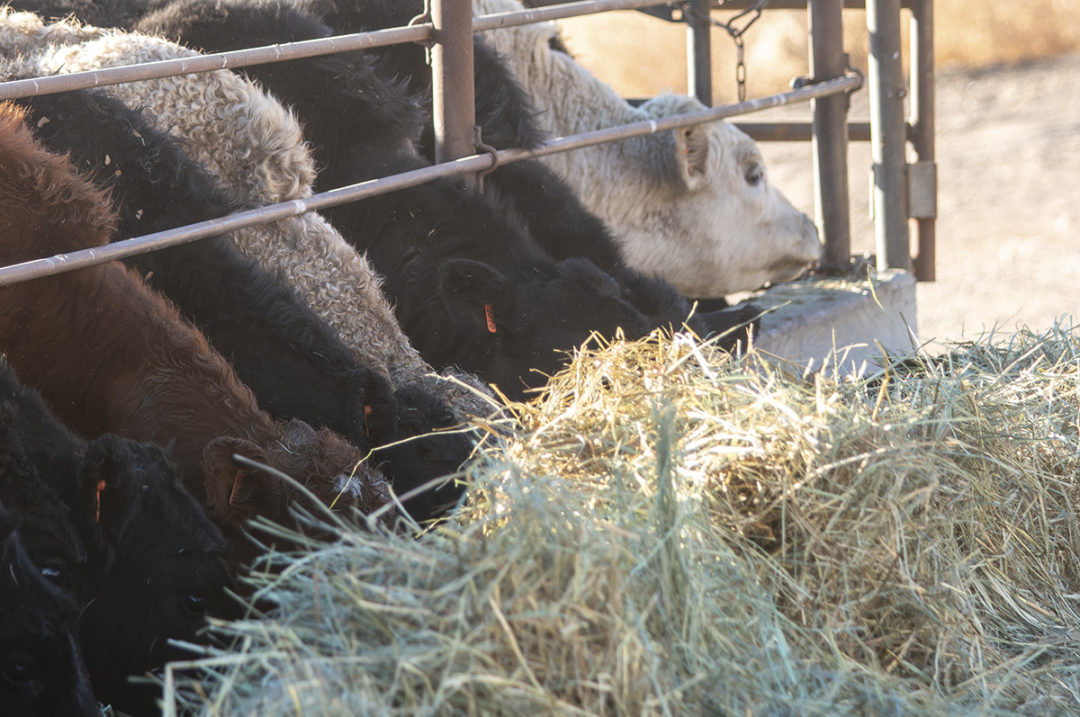Nutrition, health and performance could be considered the most widely talked about aspects of cattle production. Currently, greenhouse gases (GHGs) and their related emissions are giving them a run for their money.
General emissions from ruminants originate in the stomachs and hindgut. Together with manure storage, they make up the largest number of enteric emissions both globally and in the U.S. While genetics and microengineering address emission reductions, nutrition is the primary focus.
Focusing on nutrition
Ermias Kebreab, associate dean at the University of California – Davis College of Agriculture and Environmental Sciences, believes nutrition can be used to reduce emissions in two ways: by focusing on intensity, meaning reduction per kilogram or liter produced, or through projections of emissions per animal per day.
Regarding emission intensity, Kebreab says we’ve managed to increase productivity, particularly in dairy cattle, by 1% to 2% each year.
“This boost has resulted in a significant reduction in emissions per kilogram of milk,” Kebreab says. “Over the last 50 years in California, we managed to reduce [emissions] by 45 percent, meaning 1 liter of milk in 2024 has about half the amount [of emissions] produced in 1950. As we increase productivity per unit, the impact decreases.”
To target emission projections, researchers are focusing on feed additives and byproducts. Kebreab outlines that as genetic improvements occur, we’re working hard to match them with our understanding and nutritional practices.
“Genetics by themselves won’t accomplish anything,” he says. “We need optimal nutrition for animals to realize their potential. We’re building our knowledge base year after year, learning how to provide the right amount, at the right time, in the right conditions, both to maximize productivity and minimize emissions.”
Kebreab says feed additives that aren’t currently approved in the U.S. are demonstrating significant emission reductions in trials alongside potential productivity increases, although this is still being verified. He adds that research and trials focused on including seaweed in rations have been confirmed to substantially reduce emissions thanks to its active ingredient, bromoform. Bromoform is released from specialized seaweed plant cells and uses anti-methanogenic activity to inhibit transfer reactions, which cause methane formation.
“We need further studies on the environmental impact, plus animal and consumer health, to identify and minimize residue levels before scale-up,” he says. “Work is ongoing to understand the correct level of bromoform to feed and how it impacts health and behavior.”
Sorting through the possibilities
Phillip Lancaster, clinical assistant professor at the Kansas State University Beef Cattle Institute, says from a practical standpoint, diets can be adjusted to minimize or reduce methane emissions mainly by switching to a more highly digestible feedstuff, although adding cereal grains and moving away from forages isn’t necessarily economically feasible.
He points to essential oils, unsaturated fats, fatty acids, extracts and synthetic compounds producers already add to diets. While not technically feed additives, these also help reduce methane emissions to some degree. Unfortunately, only a limited amount can be fed without encountering negative effects on rumen fermentation, intake and digestibility.
The organic compound 3-nitrooxypropanol (3-NOP) is already approved in other countries, and Lancaster believes interest in the U.S. is high enough for it to be FDA-approved as well. He’s seen conflicting data demonstrating that it reduces emissions but doesn’t necessarily improve feed digestibility or efficiency.
“Producers need to figure out how to get paid for using it, especially if it’s not going to boost performance,” Lancaster says. “We need a marketing incentive for these types of products.”
Additionally, it’s unknown whether 3-NOP affects the risk of respiratory disease, liver abscesses or other digestive issues in feedlot cattle.
“We may not see accurate conclusions on this until we start using it, as these conditions are rare,” Lancaster says. “It takes a large number of animals to pick up on any differences in disease rates. The benefit might need to be through some other mechanism other than improved efficiency.”
Identifying sustainable sources while facing tough questions
Jan Dijkstra, associate professor in ruminant nutrition at Wageningen University in the Netherlands, says that in a circular cattle production system, the ecological footprint of food production must be reduced by closing the phosphorus cycle, reducing nitrogen losses and having a low carbon footprint.
“The better use of local sustainable sourcing and circularity – co-products, residues – are vital,” Dijkstra says. “This while improving ruminant health and – for dairy animals in particular – increasing longevity by using nutrition. Resilience and well-being are key elements. We call it ‘feeds of the future for animals of the future.’”
He notes worldwide, and certainly in Europe, the feed-food competition is increasing in importance.
“Cattle nutrition will rely even more on fiber-rich feed, unsuitable for human food, as well as byproducts, in many areas of the world,” Dijkstra states. “This poses a challenge: feed materials with more fiber, lower digestibility, probably suboptimal amino acid composition, plus anti-nutrition factors.”
Increasing fiber generally means more methane per unit of digested feed. Dijkstra believes to address this properly, we need to ensure the management of local farm resources aimed at high digestibility. His research demonstrates differences of up to 30% in enteric methane emissions of dairy animals between young, leafy silage and mature grass.
“We need innovation and research into solutions including the use of fungi and bacteria to upgrade biomass quality, cocktails of essential amino acids in situations of low protein supply – the latter required to reduce nitrogen excretion, particularly in feces – and feed additives [like 3-NOP] to effectively decrease methane in the rumen,” Dijkstra says.
Lancaster adds that changes to feed additives targeting emissions will occur in the coming years particularly due to the amount of research happening with startup companies attempting to market their products and claim market shares for improving beef and dairy sustainability.
“If we match the genetics and nutrition better, some interesting examples show promise and could potentially have a large impact,” Lancaster says.
Kebreab takes the discussion a step further, believing that during the next five years, we’ll see reductions in emissions of nearly 50% from current levels.
“I think it’s a reasonable number, but it will depend mostly on how well all the different components are implemented,” he says. “This will be extremely worthwhile, as it’s currently our largest mission.”










